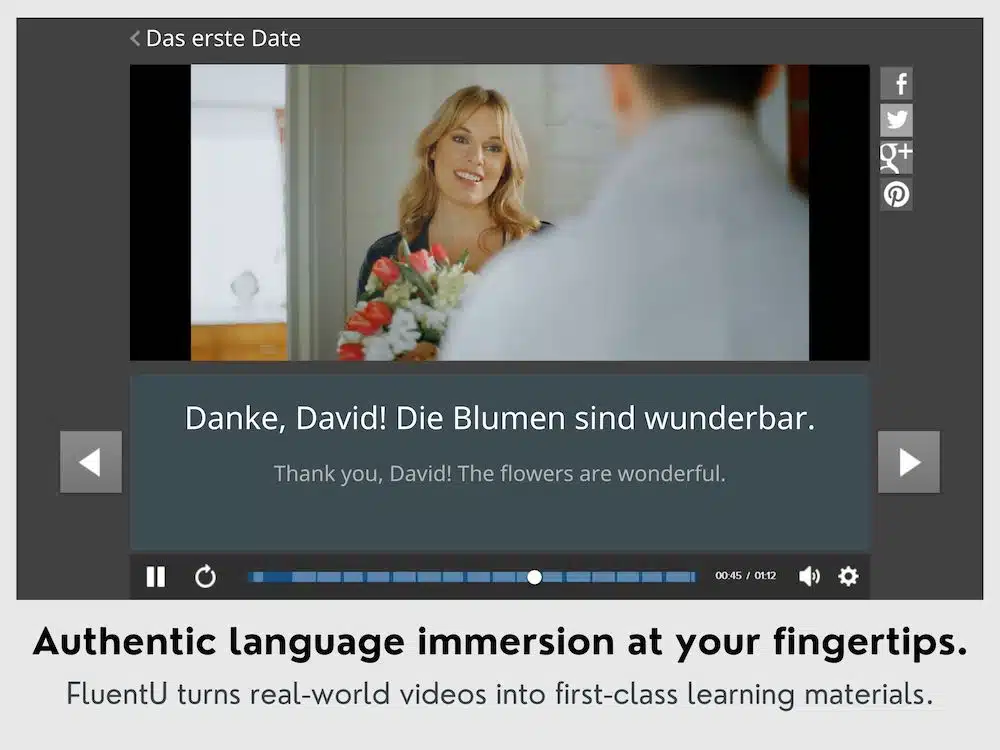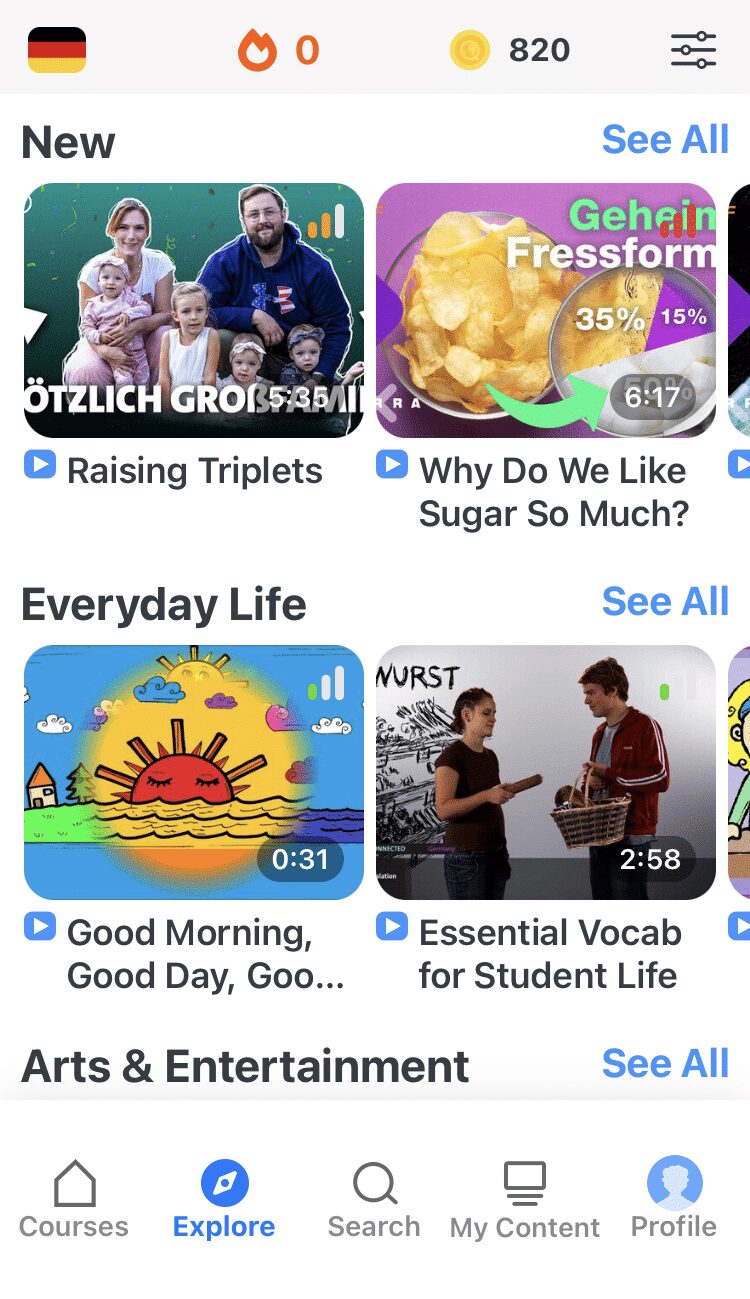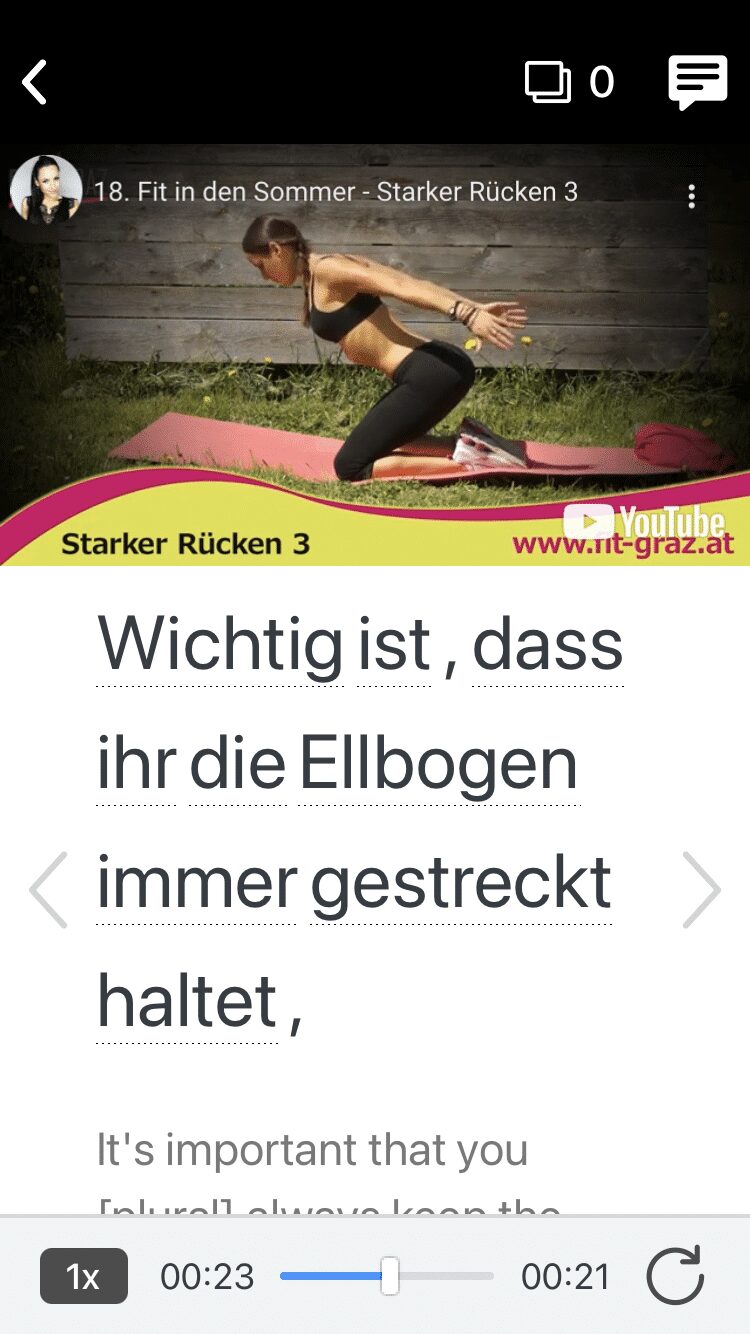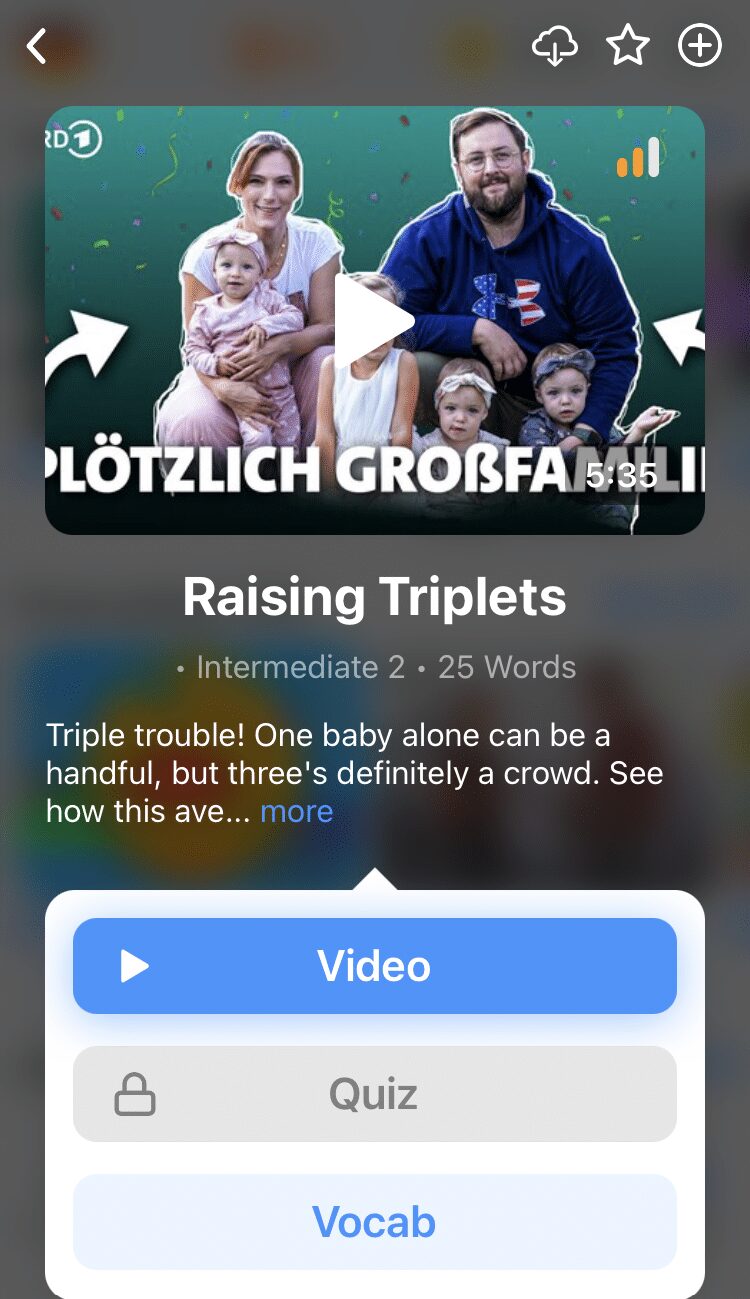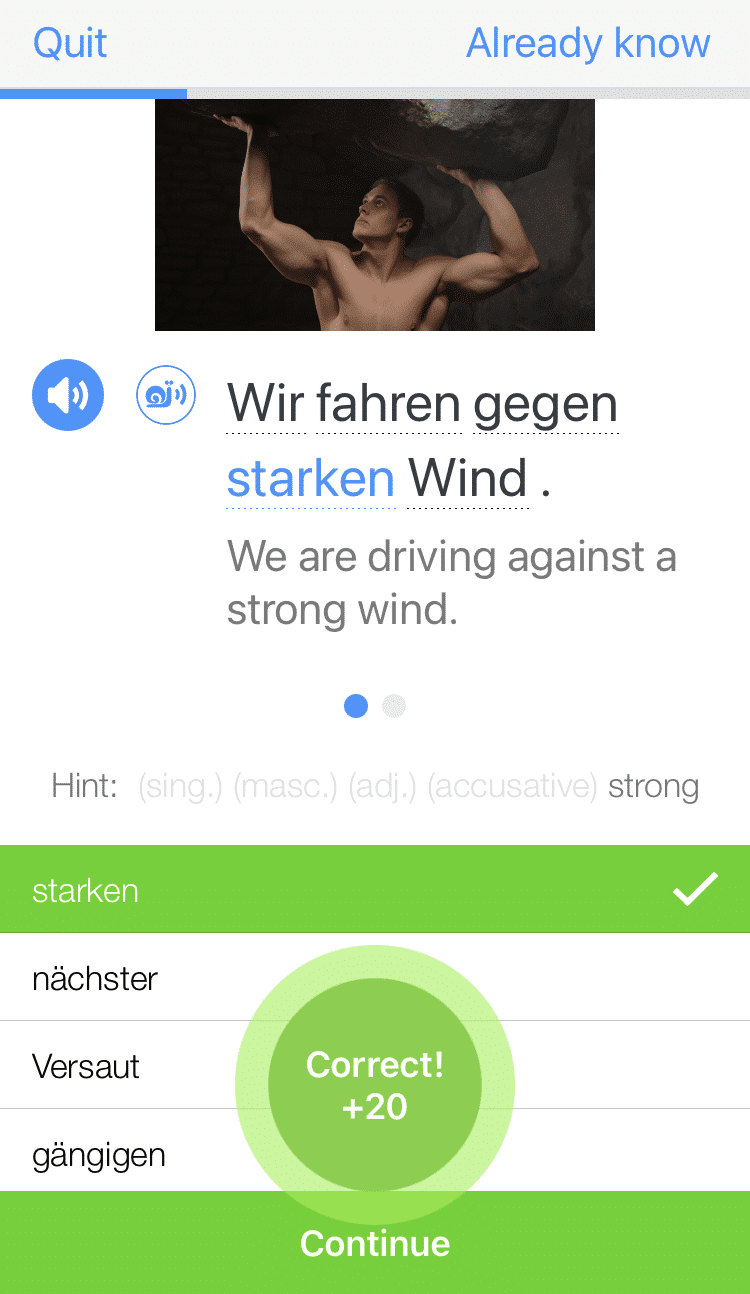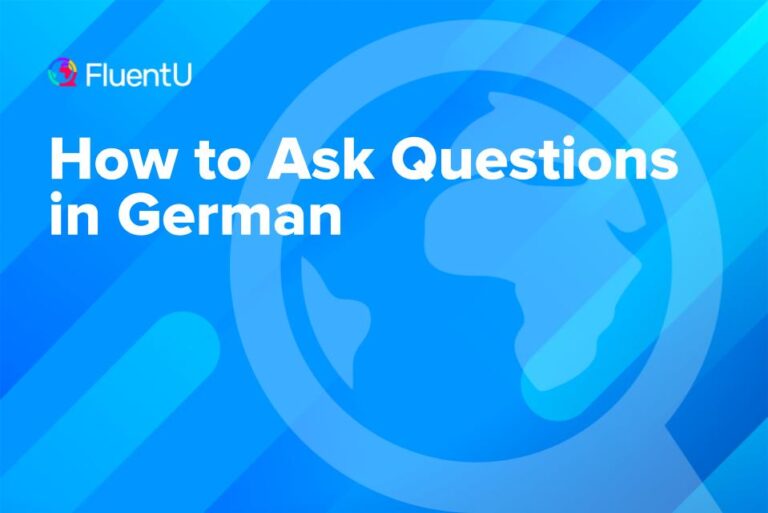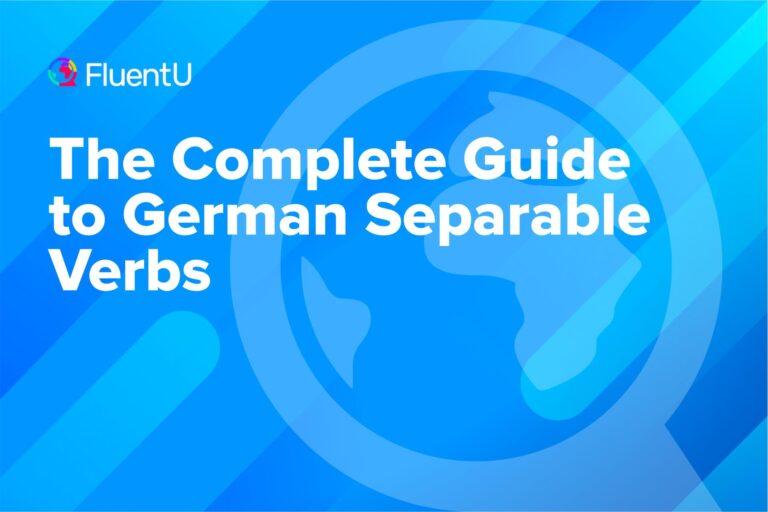Contents
- 1. an + dem = am (on the / at the)
- 2. an + das = ans (on the / at the)
- 3. auf + das = aufs (on the / at the)
- 4. bei + dem = beim (at the / in the / with the)
- 5. durch + das = durchs (through the)
- 6. für + das = fürs (for the)
- 7. hinter + dem = hinterm (behind the)
- 8. in + das = ins (in the / into the / to the)
- 9. in + dem = im (at / in the)
- 10. über + das = übers (over the / about the)
- 11. um + das = ums (at the / around)
- 12. unter + das = unters (under the)
- 13. unter + dem = unterm (under the)
- 14. von + dem = vom (from the)
- 15. vor + das = vors (in front of the)
- 16. vor + dem = vorm (in front of the / from)
- 17. zu + dem = zum (to the / to)
- 18. zu + der = zur (to the / to)
- Why Learn German Contractions?
- How to Learn German Contractions
- And One More Thing...
18 German Contractions
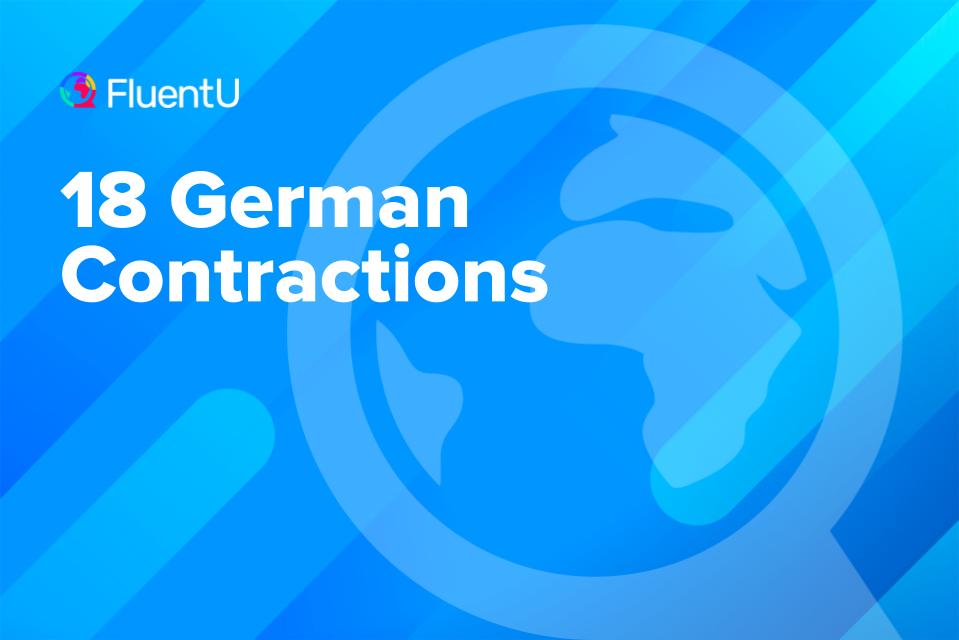
In most languages, native speakers will often opt for shortcuts, such as ways to express what they need to say in a simpler way using fewer words, and the German language is no exception. This post is all about words that are shortened by being fused together into one. Or, as they’re commonly known: contractions.
In German, contractions are usually made up of prepositions and the definite article without any extra apostrophes into the new word.
Below, you’ll find 18 of the most common German contractions and see them used in context with example sentences.
Download: This blog post is available as a convenient and portable PDF that you can take anywhere. Click here to get a copy. (Download)
1. an + dem = am (on the / at the)
Ich bin am Rathaus.
(I’m at the town hall.)
2. an + das = ans (on the / at the)
Er ist ans Haus gebunden.
(He’s stuck indoors.)
3. auf + das = aufs (on the / at the)
Es läuft aufs Geld hinaus.
(It comes down to the money.)
4. bei + dem = beim (at the / in the / with the)
Sie ist beim Freund.
(She’s with the boyfriend.)
Beim ersten Mal könnte es schwer werden.
(The first time could be difficult.)
5. durch + das = durchs (through the)
Es gleitet durchs Wasser.
(It slides through the water.)
6. für + das = fürs (for the)
Das ist nur fürs Auge.
(That’s only window-dressing.) (Literally, “That is only for the eyes.”)
7. hinter + dem = hinterm (behind the)
Ich stehe hinterm Haus.
(I’m standing behind the house.)
8. in + das = ins (in the / into the / to the)
Wir gehen ins Kino.
(We’re going to the cinema.)
Er ist ins Bett gegangen.
(He’s gone to bed.)
9. in + dem = im (at / in the)
Er sitzt im Restaurant.
(He’s sitting in the restaurant.)
Ich warte geduldig im Auto.
(I’m waiting patiently in the car.)
10. über + das = übers (over the / about the)
Ich rede übers Buch.
(I’m talking about the book.)
11. um + das = ums (at the / around)
Viele Bäume stehen ums Haus.
(There are many trees around the house.)
Sie ist ums Leben gekommen.
(She has passed away.)
12. unter + das = unters (under the)
Ich lege mich unters Messer.
(I’m going under the knife.)
13. unter + dem = unterm (under the)
Ich habe es unterm Ladentisch gefunden.
(I found it under the counter.)
14. von + dem = vom (from the)
Es dauert vom 1. Januar bis 11. Januar.
(It lasts from January 1st to January 11th.)
Sie schweifen vom Thema ab.
(They wandered from the subject.)
15. vor + das = vors (in front of the)
Sie geht vors Haus.
(She goes in front of the house.)
16. vor + dem = vorm (in front of the / from)
Er hat mich vorm Ertrinken gerettet.
(He rescued me from drowning.)
17. zu + dem = zum (to the / to)
Wie komme ich zum Stadtzentrum?
(How do I get to the city center?)
As you can see, contractions can even be helpful for asking and giving directions in German.
Ich hätte gern einen Kaffee zum mitnehmen, bitte.
(I would like a coffee to go, please.)
18. zu + der = zur (to the / to)
Die Kinder gehen zur Schule.
(The kids are going to school.)
Wir stehen gerne zur Verfügung.
(We’re pleased to be available.)
Why Learn German Contractions?
- Contractions are rarely listed in German dictionaries. This is because they aren’t really official words in Hochdeutsch
(standard German). If they’re in a dictionary, the entry will only send you to the two individual words’ definitions.
This means you’ll have to figure out the definition of the contraction on your own. It’s therefore imperative to know the meaning of all German contractions in case you come across them in conversation and reading.
One way to do this would be to knuckle down and learn them one by one. Contractions don’t have to be that boring, though, and I have some better suggestions on how to learn them coming up in the next section!
- Once you know all your contractions by heart, you’ll be able to understand much more German. As your vocabulary increases, you’ll be stumped a lot less by unknown words.
Not only that, but slipping these contractions into your speaking and writing will help you sound a lot more fluent, as many speakers see them as colloquialisms. Because of this, you may need to be careful about where you use them. It’s okay to add them to informal writing, but steer clear of them in any important formal pieces.
Just like with English contractions, German ones are optional. You can get away with using the two separate words rather than contracting them. However, contractions are widely used in German. If you learn them, you’ll be able to recognize them as well as use them confidently.
How to Learn German Contractions
As with most aspects of language, the best way of learning contractions is to throw yourself into German culture as much as possible. This will expose you to a lot more German than you’ll find in your grammar books. Tune in to German TV shows. Catch up on the latest German movie releases. Pop some German songs onto your playlists.
Alternatively, you could try using FluentU to hear these German contractions used by native speakers.
FluentU takes authentic videos—like music videos, movie trailers, news and inspiring talks—and turns them into personalized language learning lessons.
You can try FluentU for free for 2 weeks. Check out the website or download the iOS app or Android app.
P.S. Click here to take advantage of our current sale! (Expires at the end of this month.)
All of these are enjoyable ways of getting into German culture and you’ll be pleasantly surprised at how much of the language you’ll pick up from these activities, including contractions!
Here are some more ways you can learn German contractions:
- Turn your viewing and listening into a game of identifying contractions. Invite friends who are also learning German over and put a German DVD like “Good Bye, Lenin!” on, stream something on German Netflix or download a German song.
While you’re watching or listening, try to pick out any contractions. When you hear one, shout out! The first one to notice a contraction gets a point. At the end of the movie, show or song, count up everyone’s points. Whoever has the most is the winner!
- Make an effort to use more contractions in your writing. The more you write with them, the more confident you’ll be in slipping them into everyday writing and speaking tasks. You’ll also quickly pick up on spelling! Try to aim for a minimum number of contractions in your writing until you feel really confident in using them.
- Add some fun to your German learning by doing preposition and contraction exercises. Or, better yet, create your own quizzes and give them to your friends. It’s been proven that teaching someone something can actually strengthen your knowledge of the subject matter. So start teaching your friends contractions to help your own German!
Hopefully, this list of contractions will help get you started on incorporating them into your own German speech and writing.
Now that you know all about contractions and how to learn them, you’ll start to notice your German really improving!
Download: This blog post is available as a convenient and portable PDF that you can take anywhere. Click here to get a copy. (Download)
And One More Thing...
Want to know the key to learning German effectively?
It's using the right content and tools, like FluentU has to offer! Browse hundreds of videos, take endless quizzes and master the German language faster than you've ever imagine!
Watching a fun video, but having trouble understanding it? FluentU brings native videos within reach with interactive subtitles.
You can tap on any word to look it up instantly. Every definition has examples that have been written to help you understand how the word is used. If you see an interesting word you don't know, you can add it to a vocabulary list.
And FluentU isn't just for watching videos. It's a complete platform for learning. It's designed to effectively teach you all the vocabulary from any video. Swipe left or right to see more examples of the word you're on.
The best part is that FluentU keeps track of the vocabulary that you're learning, and gives you extra practice with difficult words. It'll even remind you when it’s time to review what you’ve learned.
Start using the FluentU website on your computer or tablet or, better yet, download the FluentU app from the iTunes or Google Play store. Click here to take advantage of our current sale! (Expires at the end of this month.)
